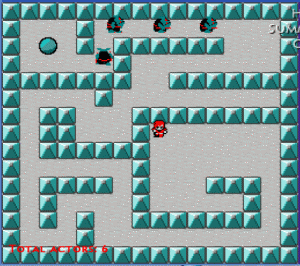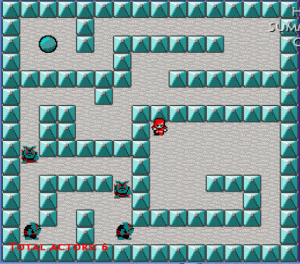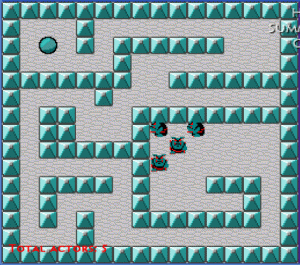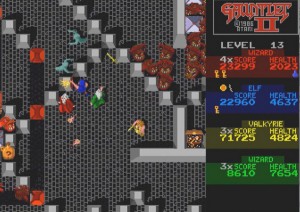- Gauntlet style, or simple line-of-sight. If there is no obstacle between the monster and his prey, he’ll just move forward. This looks good in an open area, and doesn’t use much CPU. However, if there are walls between you and the monster, you’ll see the Gauntlet Effect: monsters crowding against the wall trying in vain to break through it.
- Full pathing with the Djikstra algorithm. I can’t use the A* algorithm because monsters are going to path to the summoned creatures, hoping to kill them, as well as the main character. A* is much faster because it can favor the direction towards the target “as the crow flies” and be right most of the time, saving lots of CPU. Djikstra maps a path to every walkable square within a radius and takes a ton of CPU.
How Pathing Works
Imagine you are stuck in a labyrinth where the walls are blocks of equal size. At some point, a wizard is going to warp you to a random place in the labyrinth and unleash an undead man-bear on you. It’s vital that you find the shortest path back to the exit from wherever you find yourself. Fortunately, you have a piece of chalk with you.
You use the chalk to draw a 1 on the first tile next to the exit. This means there is1 step left until the exit. You then turn left and mark this tile with a 2, move forward and mark this tile with a 3, and so forth. When you reach a dead end, you backtrack until you find a tile that hasn’t been marked yet, and continue your path there. All you are doing is marking tiles with the value of the adjacent tile +1.
Pretty soon you’ll have marked every floor tile in the maze with a number. When you get teleported, you can see the numbers on all adjacent tiles, and move to the tile with the lower number. No guessing, just following the path you’ve already found.
Solution: Large Radius Pathing from Heroes, Line of Sight and Uncrowding
The shortest path from point A to point B is also the shortest path from point B to point A. So rather than have the monsters calculate their own paths, I have the player and summons calculate a large path using their position as the source. The monsters then request this path data from the gamestate, and can pick the closest target and move there. Because there are only 4 possible heroes on screen at once, this cuts down tremendously on CPU usage.
Gauntlet-style movement still has its place. When the monster has a line of sight to a target, he won’t even bother to use pathing anymore. This not only takes less CPU, but it looks better. Pathing in a large open space can be awkward because the monsters usually move in large horizontal and vertical paths, rather than zigzagging to close the distance to their target.
Another optimization is uncrowding. Before a monster even attempts to use pathing or line-of-sight movement, he checks to see if he can even move in any direction. If not, he gets stunned for 30 frames under the assumption that it’ll be a while before a path opens up. If there is only one direction to take, he will sometimes move in that direction, even if it is away from his target. This helps cut down on the “conga line” phenomenon at bottleneck points.
Pathing torture test: over 100 monsters
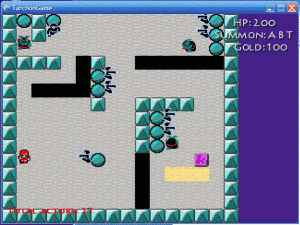
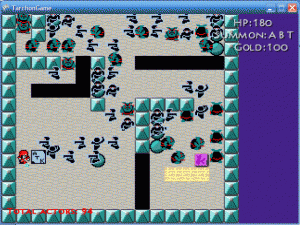
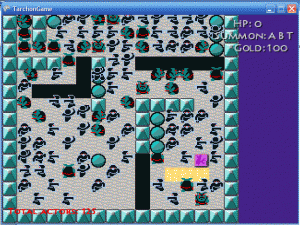
You can see the uncrowding behavior in bottom right area of the final screen. Monsters have moved downward, away from the player, to rally and let the other monsters through.
Maze Solving
The monsters are pretty smart at this point. Check out how easily they solve this maze and overwhelm our hero:
